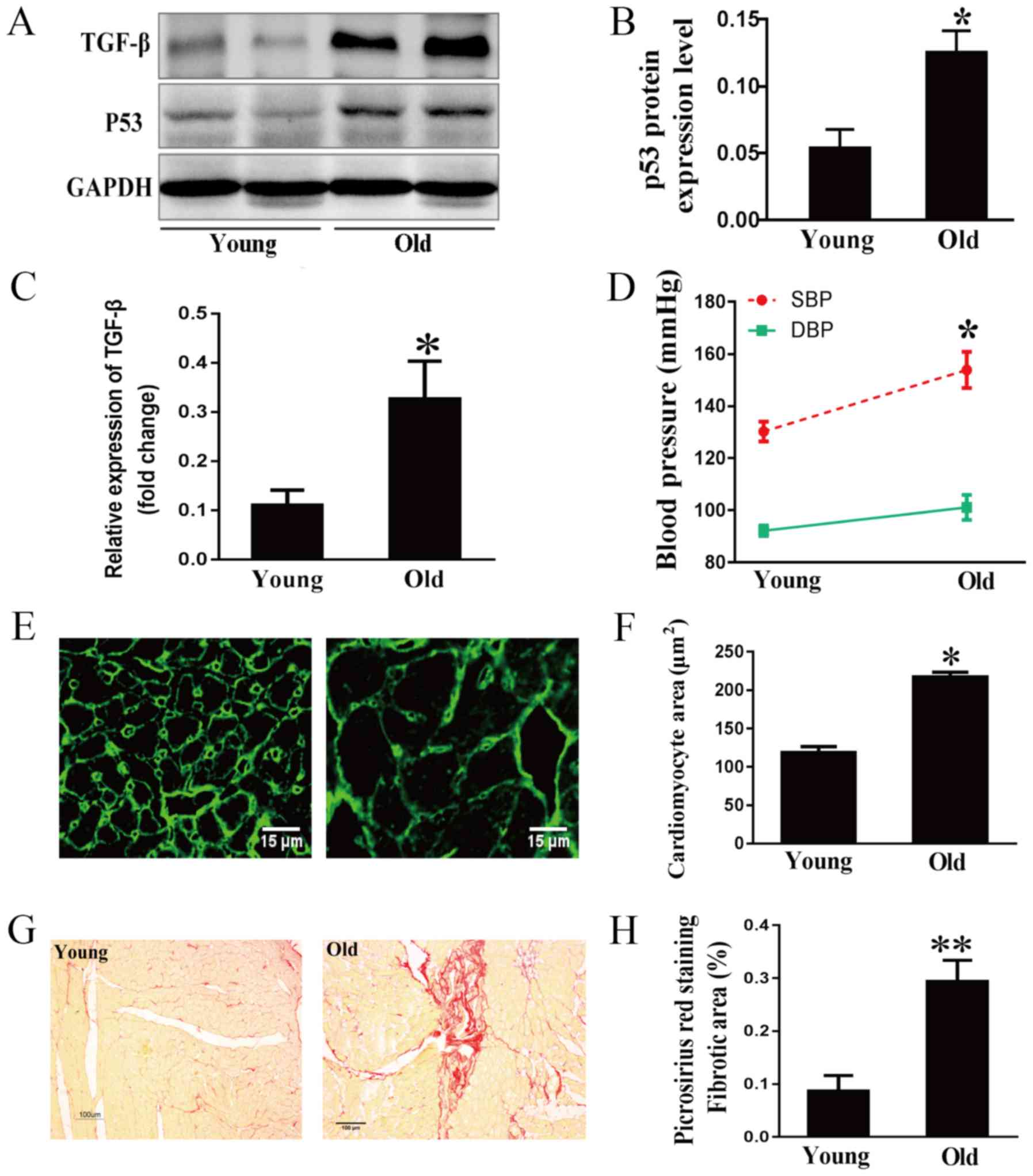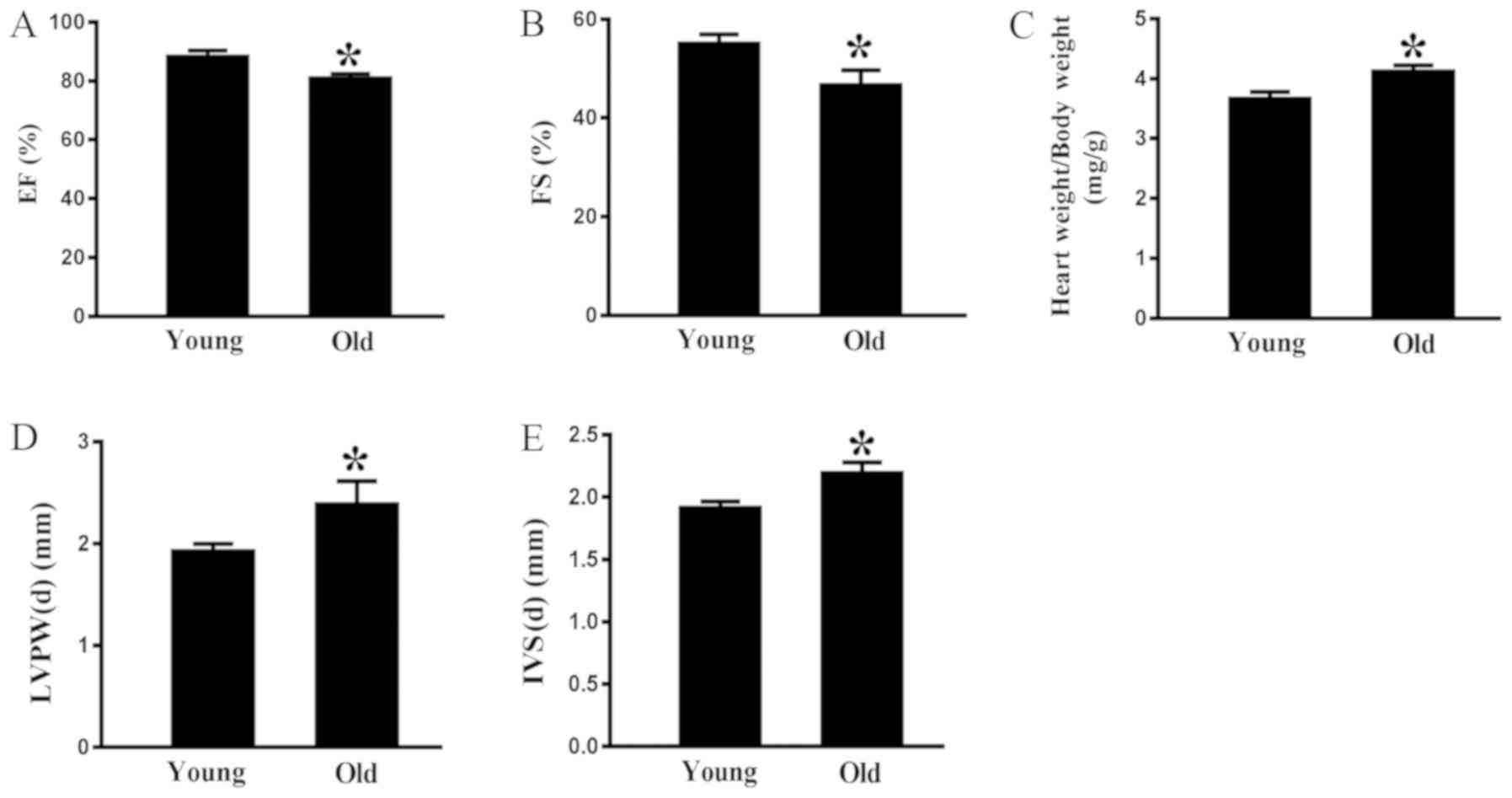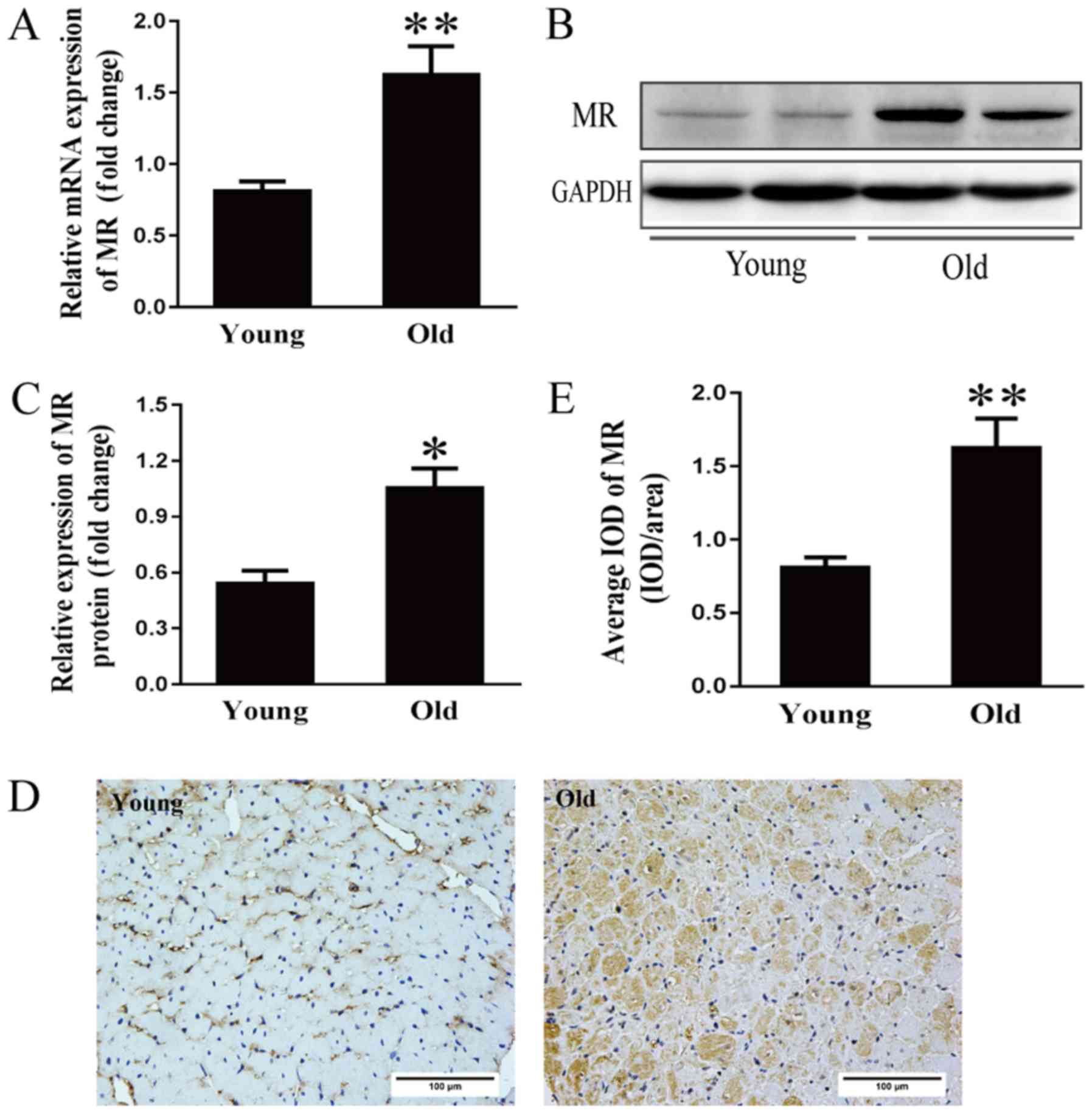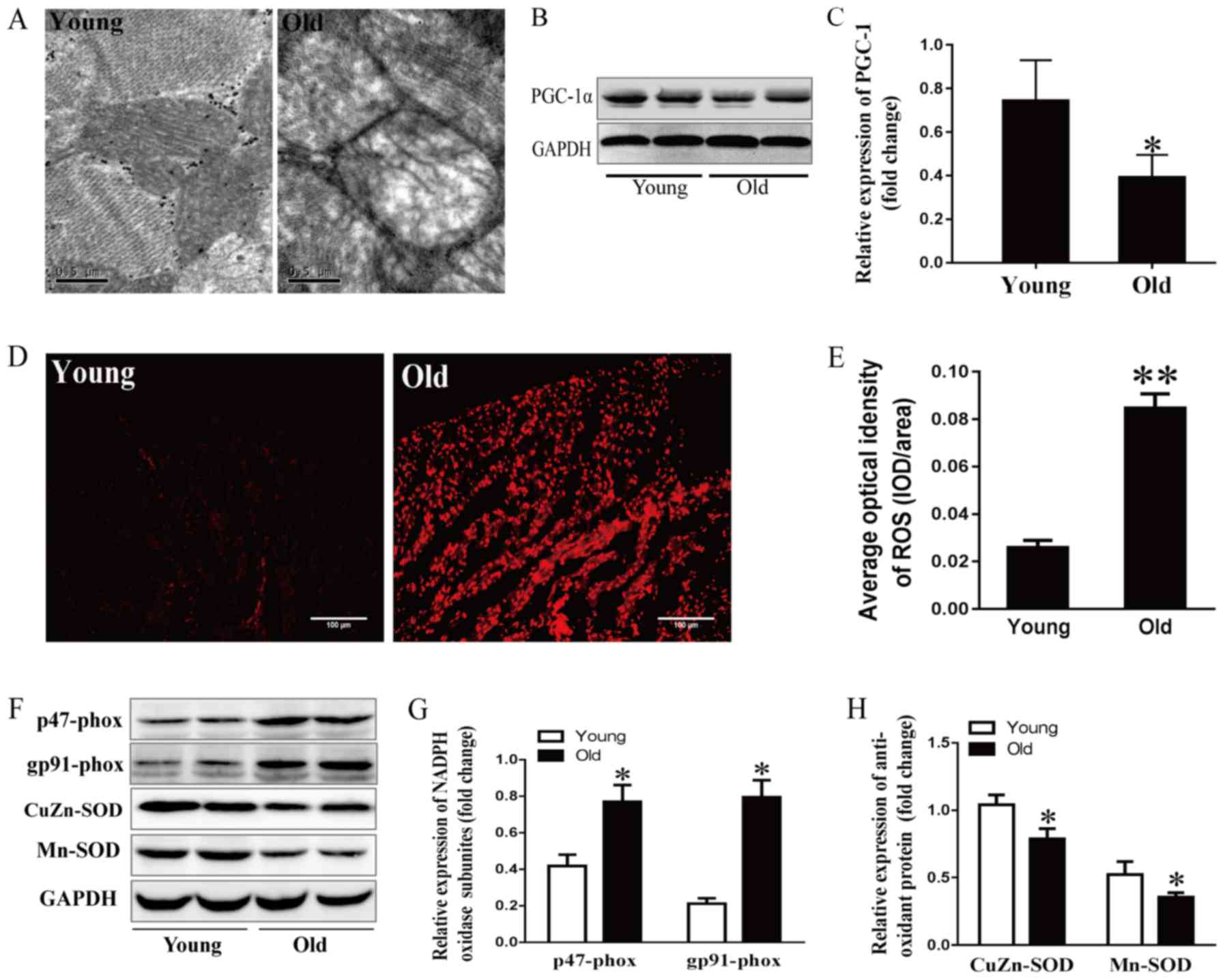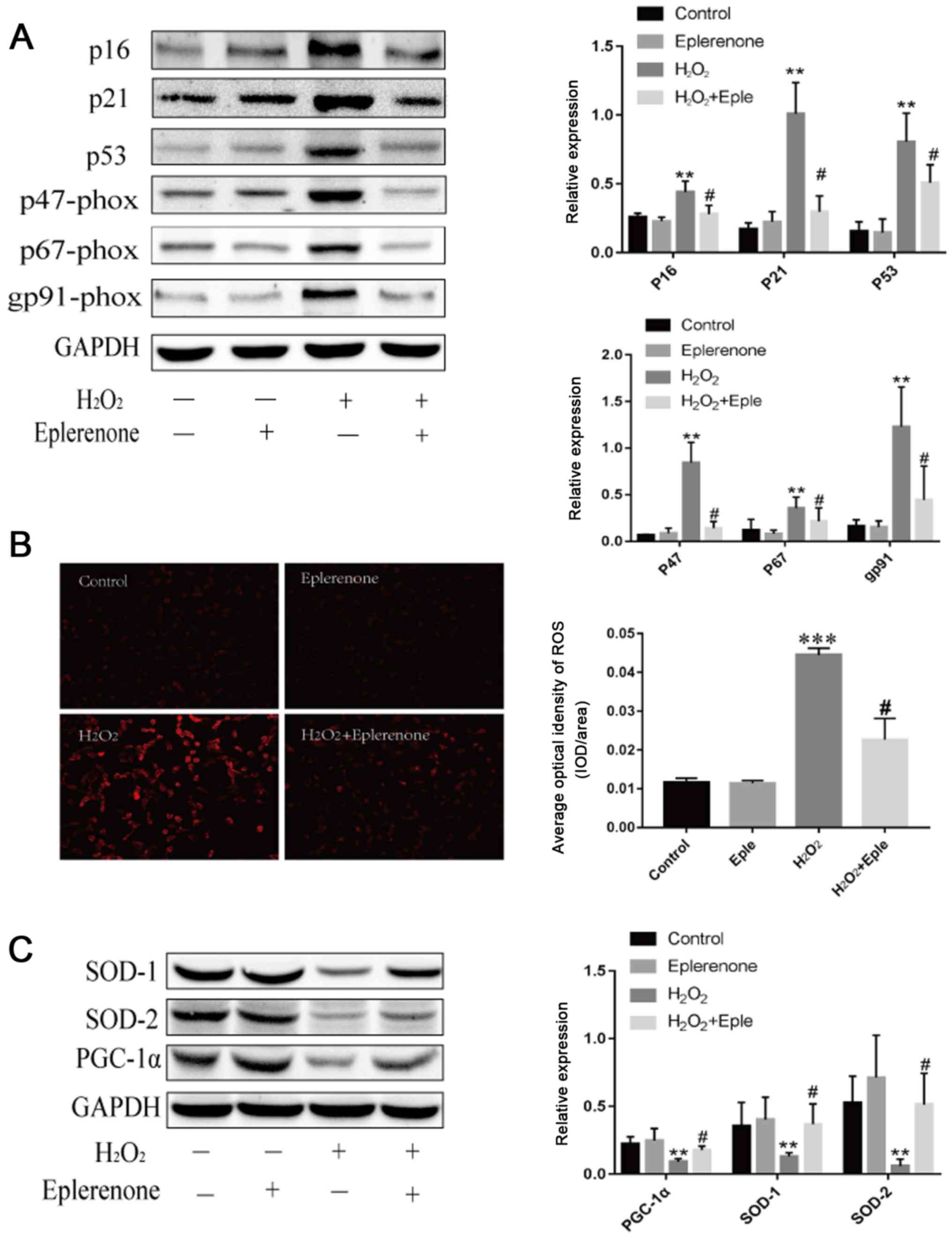|
1
|
United Nations, Department of Economic,
Social Affairs and Population Division: World Population Ageing
2017 - Highlights (ST/ESA/SER.A/397). United Nations, New York, NY,
2017.
|
|
2
|
Wyss-Coray T: Ageing, neurodegeneration
and brain rejuvenation. Nature. 539:180–186. 2016. View Article : Google Scholar : PubMed/NCBI
|
|
3
|
Rickard AJ, Morgan J, Bienvenu LA,
Fletcher EK, Cranston GA, Shen JZ, Reichelt ME, Delbridge LM and
Young MJ: Cardiomyocyte mineralocorticoid receptors are essential
for deoxycorticosterone/salt-mediated inflammation and cardiac
fibrosis. Hypertension. 60:1443–1450. 2012. View Article : Google Scholar : PubMed/NCBI
|
|
4
|
Lother A, Berger S, Gilsbach R, Rösner S,
Ecke A, Barreto F, Bauersachs J, Schütz G and Hein L: Ablation of
mineralocorticoid receptors in myocytes but not in fibroblasts
preserves cardiac function. Hypertension. 57:746–754. 2011.
View Article : Google Scholar : PubMed/NCBI
|
|
5
|
López-Otin C, Blasco MA, Partridge L,
Serrano M and Kroemer G: The hallmarks of aging. Cell.
153:1194–1217. 2013. View Article : Google Scholar : PubMed/NCBI
|
|
6
|
Biernacka A and Frangogiannis NG: Aging
and cardiac fibrosis. Aging Dis. 2:158–173. 2011.PubMed/NCBI
|
|
7
|
Boyle AJ, Shih H, Hwang J, Ye J, Lee B,
Zhang Y, Kwon D, Jun K, Zheng D, Sievers R, et al: Cardiomyopathy
of aging in the mammalian heart is characterized by myocardial
hypertrophy, fibrosis and a predisposition towards cardiomyocyte
apoptosis and autophagy. Exp Gerontol. 46:549–559. 2011. View Article : Google Scholar : PubMed/NCBI
|
|
8
|
Pitt B, Zannad F, Remme WJ, Cody R,
Castaigne A, Perez A, Palensky J and Wittes J: The effect of
spironolactone on morbidity and mortality in patients with severe
heart failure. randomized aldactone evaluation study investigators.
N Engl J Med. 341:709–717. 1999. View Article : Google Scholar : PubMed/NCBI
|
|
9
|
Fraccarollo D, Berger S, Galuppo P, Kneitz
S, Hein L, Schütz G, Frantz S, Ertl G and Bauersachs J: Deletion of
cardiomyocyte mineralocorticoid receptor ameliorates adverse
remodeling after myocardial infarction. Circulation. 123:400–408.
2011. View Article : Google Scholar : PubMed/NCBI
|
|
10
|
Kilkenny C, Browne W, Cuthill IC, Emerson
M and Altman DG; NC3Rs Reporting Guidelines Working Group, : Animal
research: Reporting in vivo experiments: The ARRIVE guidelines. Br
J Pharmacol. 160:1577–1579. 2010. View Article : Google Scholar : PubMed/NCBI
|
|
11
|
AVMA Guidelines for the Euthanasia of
Animals: 2013 Edition. American Veterinary Medical Association.
(Schaumburg, IL). 2013.
|
|
12
|
Padilha CS, Borges FH, Costa Mendes da
Silva LE, Frajacomo FTT, Jordao AA, Duarte JA, Cecchini R, Guarnier
FA and Deminice R: Resistance exercise attenuates skeletal muscle
oxidative stress, systemic pro-inflammatory state, and cachexia in
Walker-256 tumor-bearing rats. Appl Physiol Nutr Metab. 42:916–923.
2017. View Article : Google Scholar : PubMed/NCBI
|
|
13
|
Guarnier FA, Cecchini AL, Suzukawa AA,
Maragno AL, Simão AN, Gomes MD and Cecchini R: Time course of
skeletal muscle loss and oxidative stress in rats with Walker 256
solid tumor. Muscle Nerve. 42:950–958. 2010. View Article : Google Scholar : PubMed/NCBI
|
|
14
|
Livak KJ and Schmittgen TD: Analysis of
relative gene expression data using real-time quantitative PCR and
the 2(-Delta Delta C(T)) method. Methods. 25:402–408. 2001.
View Article : Google Scholar : PubMed/NCBI
|
|
15
|
Lai J, Chen F, Chen J, Ruan G, He M, Chen
C, Tang J and Wang D: Overexpression of decorin promoted
angiogenesis in diabetic cardiomyopathy via IGF1R-AKT-VEGF
signaling. Sci Rep. 7:444732017. View Article : Google Scholar : PubMed/NCBI
|
|
16
|
Mascorro JA and Bozzola JJ: Processing
biological tissues for ultrastructural study. Methods Mol Biol.
369:19–34. 2007. View Article : Google Scholar : PubMed/NCBI
|
|
17
|
Feng W, Xu X, Zhao G, Zhao J, Dong R, Ma
B, Zhang Y, Long G, Wang DW and Tu L: Increased Age-related cardiac
dysfunction in bradykinin B2 receptor-deficient mice. J Gerontol A
Biol Sci Med Sci. 71:178–187. 2016. View Article : Google Scholar : PubMed/NCBI
|
|
18
|
Takimoto E, Champion HC, Li M, Ren S,
Rodriguez ER, Tavazzi B, Lazzarino G, Paolocci N, Gabrielson KL,
Wang Y and Kass DA: Oxidant stress from nitric oxide synthase-3
uncoupling stimulates cardiac pathologic remodeling from chronic
pressure load. J Clin Invest. 115:1221–1231. 2005. View Article : Google Scholar : PubMed/NCBI
|
|
19
|
Tyner SD, Venkatachalam S, Choi J, Jones
S, Ghebranious N, Igelmann H, Lu X, Soron G, Cooper B, Brayton C,
et al: p53 mutant mice that display early ageing-associated
phenotypes. Nature. 415:45–53. 2002. View
Article : Google Scholar : PubMed/NCBI
|
|
20
|
Chen T, Li J, Liu J, Li N, Wang S, Liu H,
Zeng M, Zhang Y and Bu P: Activation of SIRT3 by resveratrol
ameliorates cardiac fibrosis and improves cardiac function via the
TGF-β/Smad3 pathway. Am J Physiol Heart Circ Physiol.
308:H424–H434. 2015. View Article : Google Scholar : PubMed/NCBI
|
|
21
|
Susic D, Varagic J and Frohlich ED:
Isolated systolic hypertension in elderly WKY is reversed with
L-arginine and ACE inhibition. Hypertension. 38:1422–1426. 2001.
View Article : Google Scholar : PubMed/NCBI
|
|
22
|
Neves MF, Cunha AR, Cunha MR, Gismondi RA
and Oigman W: The role of renin-angiotensin-aldosterone system and
its new components in arterial stiffness and vascular aging. High
Blood Press Cardiovasc Prev. 25:137–145. 2018. View Article : Google Scholar : PubMed/NCBI
|
|
23
|
Cheng Z, Ito S, Nishio N, Thanasegaran S,
Fang H and Isobe K: Characteristics of cardiac aging in C57BL/6
mice. Exp Gerontol. 48:341–348. 2013. View Article : Google Scholar : PubMed/NCBI
|
|
24
|
Sahin E, Colla S, Liesa M, Moslehi J,
Müller FL, Guo M, Cooper M, Kotton D, Fabian AJ, Walkey C, et al:
Telomere dysfunction induces metabolic and mitochondrial
compromise. Nature. 470:359–365. 2011. View Article : Google Scholar : PubMed/NCBI
|
|
25
|
Moslehi J, DePinho RA and Sahin E:
Telomeres and mitochondria in the aging heart. Circ Res.
110:1226–1237. 2012. View Article : Google Scholar : PubMed/NCBI
|
|
26
|
Leone TC and Kelly DP: Transcriptional
control of cardiac fuel metabolism and mitochondrial function. Cold
Spring Harb Symp Quant Bio. 76:175–182. 2011. View Article : Google Scholar
|
|
27
|
Lehman JJ, Barger PM, Kovacs A, Saffitz
JE, Medeiros DM and Kelly DP: Peroxisome proliferator-activated
receptor gamma coactivator-1 promotes cardiac mitochondrial
biogenesis. J Clin Invest. 106:847–856. 2000. View Article : Google Scholar : PubMed/NCBI
|
|
28
|
Bonda TA, Szynaka B, Sokolowska M,
Dziemidowicz M, Winnicka MM, Chyczewski L and Kamiński KA:
Remodeling of the intercalated disc related to aging in the mouse
heart. J Cardiol. 68:261–268. 2016. View Article : Google Scholar : PubMed/NCBI
|
|
29
|
Burks TN, Marx R, Powell L, Rucker J,
Bedja D, Heacock E, Smith BJ, Foster DB, Kass D, O'Rourke B, et al:
Combined effects of aging and inflammation on renin-angiotensin
system mediate mitochondrial dysfunction and phenotypic changes in
cardiomyopathies. Oncotarget. 6:11979–11993. 2015. View Article : Google Scholar : PubMed/NCBI
|
|
30
|
Yoon HE and Choi BS: The renin-angiotensin
system and aging in the kidney. Korean J Intern Med. 29:291–295.
2014. View Article : Google Scholar : PubMed/NCBI
|
|
31
|
Uneda K, Wakui H, Maeda A, Azushima K,
Kobayashi R, Haku S, Ohki K, Haruhara K, Kinguchi S, Matsuda M, et
al: Angiotensin II Type 1 receptor-associated protein regulates
kidney aging and lifespan independent of angiotensin. J Am Heart
Assoc. 6(pii): e0061202017.PubMed/NCBI
|
|
32
|
Yoon HE, Kim EN, Kim MY, Lim JH, Jang IA,
Ban TH, Shin SJ, Park CW, Chang YS and Choi BS: Age-associated
changes in the vascular renin-angiotensin system in mice. Oxid Med
Cell Longev. 2016:67310932016. View Article : Google Scholar : PubMed/NCBI
|
|
33
|
Wang M, Zhang J, Walker SJ, Dworakowski R,
Lakatta EG and Shah AM: Involvement of NADPH oxidase in
age-associated cardiac remodeling. J Mol Cell Cardiol. 48:765–772.
2010. View Article : Google Scholar : PubMed/NCBI
|
|
34
|
Young MJ and Rickard AJ: Mineralocorticoid
receptors in the heart: Lessons from cell-selective transgenic
animals. J Endocrinol. 224:R1–R13. 2015. View Article : Google Scholar : PubMed/NCBI
|
|
35
|
Ouvrard-Pascaud A, Sainte-Marie Y, Bénitah
JP, Perrier R, Soukaseum C, Nguyen Dinh Cat A, Royer A, Le Quang K,
Charpentier F, Demolombe S, et al: Conditional mineralocorticoid
receptor expression in the heart leads to life-threatening
arrhythmias. Circulation. 111:3025–3033. 2005. View Article : Google Scholar : PubMed/NCBI
|
|
36
|
Sen N, Satija YK and Das S: PGC-1α, a key
modulator of p53, promotes cell survival upon metabolic stress. Mol
Cell. 44:621–634. 2011. View Article : Google Scholar : PubMed/NCBI
|
|
37
|
Viña J, Gomez-Cabrera MC, Borras C, Froio
T, Sanchis-Gomar F, Martinez-Bello VE and Pallardo FV:
Mitochondrial biogenesis in exercise and in ageing. Adv Drug Deliv
Rev. 61:1369–1374. 2009. View Article : Google Scholar : PubMed/NCBI
|
|
38
|
López-Lluch G, Irusta PM, Navas P and de
Cabo R: Mitochondrial biogenesis and healthy aging. Exp Gerontol.
43:813–819. 2008. View Article : Google Scholar : PubMed/NCBI
|
|
39
|
Sahin E and Depinho RA: Linking functional
decline of telomeres, mitochondria and stem cells during ageing.
Nature. 464:520–528. 2010. View Article : Google Scholar : PubMed/NCBI
|
|
40
|
Bedard K and Krause KH: The NOX family of
ROS-generating NADPH oxidases: Physiology and pathophysiology.
Physiol Rev. 87:245–313. 2007. View Article : Google Scholar : PubMed/NCBI
|
|
41
|
Tsutsui H, Kinugawa S and Matsushima S:
Mitochondrial oxidative stress and dysfunction in myocardial
remodelling. Cardiovasc Res. 81:449–456. 2009. View Article : Google Scholar : PubMed/NCBI
|
|
42
|
Di Lisa F, Kaludercic N, Carpi A, Menabó R
and Giorgio M: Mitochondria and vascular pathology. Pharmacol Rep.
61:123–130. 2009. View Article : Google Scholar : PubMed/NCBI
|
|
43
|
Gomez-Cabrera MC, Sanchis-Gomar F,
Garcia-Valles R, Pareja-Galeano H, Gambini J, Borras C and Viña J:
Mitochondria as sources and targets of damage in cellular aging.
Clin Chem Lab Med. 50:1287–1295. 2012. View Article : Google Scholar : PubMed/NCBI
|
|
44
|
Rajamohan SB, Raghuraman G, Prabhakar NR
and Kumar GK: NADPH oxidase-derived H(2)O(2) contributes to
angiotensin II-induced aldosterone synthesis in human and rat
adrenal cortical cells. Antioxid Redox Signal. 17:445–459. 2012.
View Article : Google Scholar : PubMed/NCBI
|















